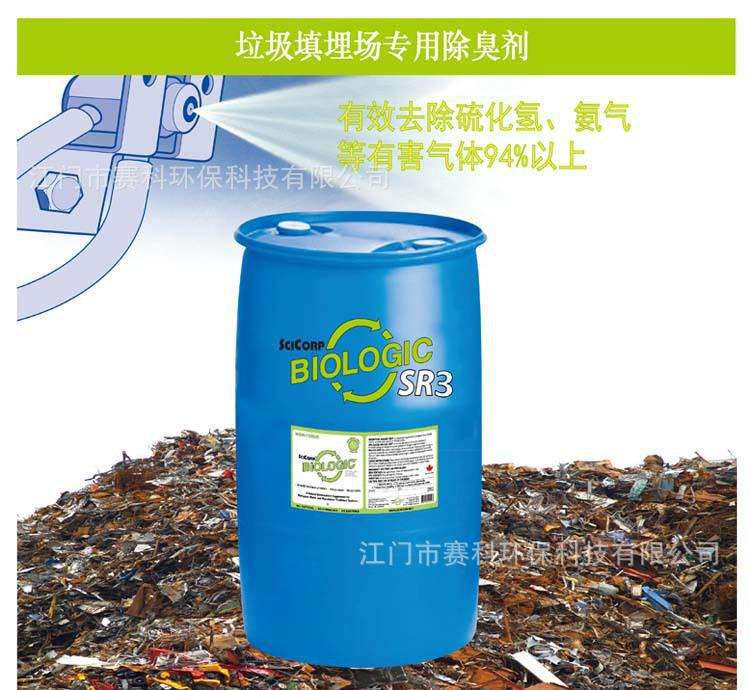How to achieve good deodorization effect by using deodorants in garbage dumps
What are the differences in the application methods and share of garbage deodorants in various fields?
Garbage deodorization refers to the use of a series of methods to remove gas substances that affect the olfactory organs and cause unpleasant and harmful effects on people's daily environment.
The odor of garbage occurs due to the decomposition of organic components by bacteria. 75% to 80% of daily garbage is organic, mainly including fruit peels, vegetable leaves and stems, leftover food/vegetables, poultry, animal and fish skins, hair, viscera, fat, feces, waste materials/blood, leaves, waste paper, flowers and plants, and animal bodies, as well as certain amounts of water In the process of natural digestion, under the action of aerobic/anaerobic fermentation, foul odor occurs, especially in hot weather. Due to the accelerated fermentation process, the foul odor becomes more severe The odor of daily garbage includes ammonia, hydrogen sulfide, organic amines, organic sulfur, volatile fatty acids, etc
The primary treatment method for garbage is to pile up the garbage after it enters the site, screen it after fermentation and maturation, use the screened material as compost, and send the screened material to landfill or combustion. Because the foul odor of garbage decay has a significant impact on the surrounding environment, the use of garbage deodorants is crucial. Do we all understand the detailed usage quota and methods of garbage deodorants?

Share of waste deodorant usage:
1. Application of waste incineration power plants and landfills:
Diluted 50-500 times, it is used for direct spraying of garbage and road surfaces in landfills and waste incineration power plants. To achieve the effect of removing air odor and suppressing odor through garbage modification.
2. Garbage compactor station, transfer station, garbage truck, and garbage bin utilization:
Collaborating with specialized equipment for waste deodorization, using 20-100 times dilution to achieve the effect of removing air odor and modifying waste to suppress odor.
3. Garbage room and temporary garbage storage yard:
Dilute by 100-300 times and directly spray the surface of the garbage for use, achieving the effect of removing air odor and modifying the garbage to suppress the occurrence of odor.
4. Application of landfill leachate and sewage:
It can be directly added into the landfill leachate, with an increase of about 0.3-1.0 kg per ton of landfill leachate. Maybe it can be sprayed after dilution with spray equipment to remove the air odor and the odor of landfill leachate.
Application method of garbage deodorant:
1. Spray deodorization equipment deodorant
The full active control system is used to transport the deodorant to the spray deodorization equipment for high-pressure atomization, and the active spray can set the time actively, which can greatly improve the deodorization power and make the garbage dump free of obvious odor.
2. Sprinkler truck deodorant
Dilute the deodorant with water using a sprinkler truck before spraying.
Article source: Deodorant manufacturer http://www.scneng.com.hk
-
06-11
"Environmental Doctor" Du Siyuan: Environmental Protection is a Lifestyle Attitude
There is a Hong Kong compatriot in Jiangmen who often frequents various farms and plantations, walks in mechanical factories, and is seen by others as the nemesis of environmental problems. He conside
-
03-16
Deodorant manufacturer: Deodorants reduce soil pollution
Waste is a chaotic mixture of various components. The accumulation of debris on the surface of soil can cause some chemical reactions, releasing harmful gases, which can lead to soil pollution and eve
-
12-01
Deodorant Manufacturers: Differences between Microbial Deodorants and Traditional Deodorants
The waste that is not needed in our daily life and work is called waste. Due to the large amount of waste discharged and the complex categories, there are great difficulties in reducing waste and deod
-
11-08
Application of Deodorant Manufacturers in Domestic Waste Treatment
Garbage is the waste generated in everyone's daily life and work. Due to its large discharge volume and complex and diverse composition, it poses great difficulties in reducing and deodorizing wa
